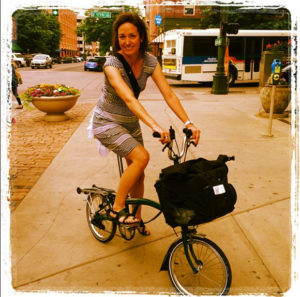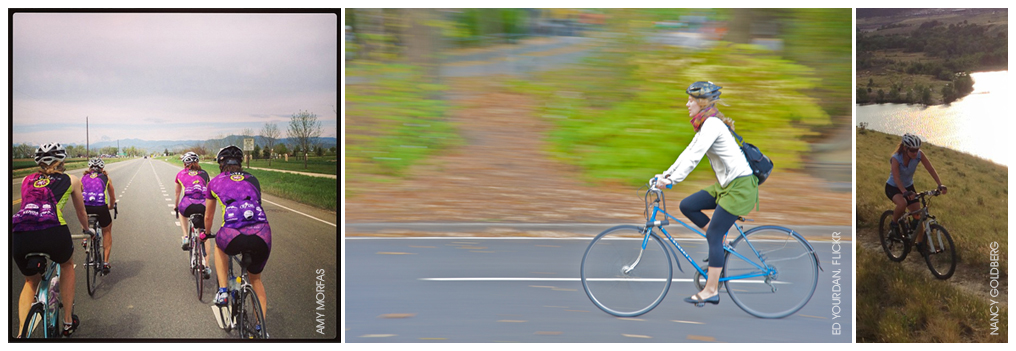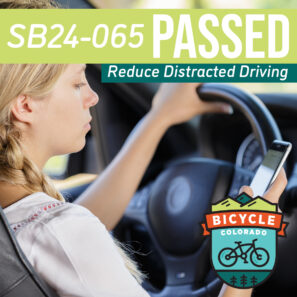Ride on, ladies
 I’ve just had the pleasure of attending the Women’s Forum at the National Bike Summit in Washington, DC, and my head is spinning as fast as my bike wheels with all the information and inspiration that’s out there.
I’ve just had the pleasure of attending the Women’s Forum at the National Bike Summit in Washington, DC, and my head is spinning as fast as my bike wheels with all the information and inspiration that’s out there.
Nearly 400 women and men attended this one-day forum with one goal: showcasing female leaders and getting more women on bikes. And this is on the heels of our Colorado Bicycle Summit having its first “Getting More Women Riding” breakout session, which had the same focus.
More women on bikes is a hot topic
Getting more women on bikes is a hot topic in today’s bike advocacy world. It’s an interesting subject, and sometimes borderline controversial, like so many gender-specific discussions. Many of us have been riding a long time and don’t think of ourselves as “female cyclists,” just cyclists.
In some ways, without even realizing it and way before I began working in this field, I was an early adopter in bike commuting while living in very car-centric Los Angeles in the early 90s. I then moved to Germany for a few years where transportation by bicycle is the norm. Now I live in Boulder, which is known for its bicycle infrastructure and the number of people who ride.
But the numbers speak for themselves, and nationally there are far more men on bikes than women.
According to the League of American Bicyclists, in 2009, women accounted for just 24 percent of bicycle trips in the United States.
There are many reasons for this, ranging from fear of “helmet hair,” to not knowing how to dress for a bike commute or change a flat tire, to managing transportation with children.
Creating easy places to ride is key
But studies have shown that more women—LOTS more women—would ride more often simply if there were easier places to ride. Not in traffic. Not in conditions that are perceived as (or actually are) dangerous.
Getting the United States to upgrade its cities and towns into more livable communities won’t be easy or fast, but achieving the results is worth the efforts of advocates everywhere.
And it’s happening. As fewer young people are driving and more Americans are using mass transportation than ever before, we are demanding bike lanes and urban infrastructure that meets the needs of all road users. Separated bike lanes (away from traffic) are cropping up in cities across the country.

The road ahead
But we have a long way to go. After spending a day celebrating and encouraging women, the opening keynotes at the bike summit were 3 men. And we’ve struggled to find women keynote speakers for our own state bike summit.
So while more women (and minorities) are gaining ground in the bike advocacy world and starting to fill leadership positions, we are still riding uphill. But there’s momentum, without question.
It’s exciting to see more women gaining leadership roles in the industry and within bike advocacy organizations. And the industry is moving beyond “shrink it and pink it” to make more products that enhance the experience and performance of riding for women.
I’m convinced that changes in our communities will lead to more women riding and embracing the beauty and simplicity of a bike-centric lifestyle. And most importantly, experiencing the pure joy that can be found on a bike.
Leave A COMMENT
Our twitter feed is unavailable right now.
The Latest News
view all- Jul 1, 2025
- by Bicycle Colorado
In Their Words: Siblings Log Thousands of Miles by Biking to School
Guest Blog Post: By The Williams Family It sounds like a scene from a bygone era: a brother and sister set off on bicycles to school each and every morning, sometimes stopping at the public library or the ice cream parlor on the way home after school. For Denver residents Luella and…
- Bicycle Commuting,
- Kids on Bikes,
- Safe Routes,
- Transportation Talk
- No Comments








